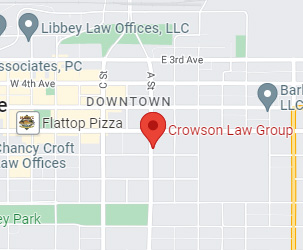Medical Malpractice: Special Requirements

Medical malpractice occurs when patients are harmed by the actions or failure to act by doctors and other healthcare professionals. Medical malpractice often occurs in areas of child birth injuries, medical misdiagnosis, surgery errors and hospital related infections. The common types of medical malpractice and legal issues include informed consent and medical malpractice.
Medical malpractice cases involve complex medical and legal laws that require expert opinions and experienced attorneys and law firms that handle medical malpractice cases. For more information on personal injury matters and on your potential medical malpractice case, contact an Anchorage medical malpractice attorney to conduct a free case evaluation of your matter.
Many states have special rules and procedures for medical malpractice claims and thus there are special requirements in medical malpractice cases, some of which are:
Statute of limitations – according to the Cornell Law School – Legal Information Institute, the term statute of limitation is defined as any “law that bars claims after a certain period of time passes after an injury. The period of time varies depending on the jurisdiction and the type of claim.” In Alaska, the statute of limitation with respect to medical malpractice claims is two years. If you do not file the lawsuit within the specified period of time, the court will dismiss the case despite the facts. The clock on your medical malpractice claim starts when the negligent act happened or when a patient discovers that he or she has an injury.
Expert testimony is required – as a result of the plaintiff calling into question the healthcare professional’s medical standard of care there is need for a healthcare professional in the same field who is similarly qualified to provide expert testimony as to whether or not the healthcare professional’s medical standard of care dropped to the level of negligence. An expert’s testimony is crucial to the case of the plaintiff. The expert witness must be qualified and can make or break the plaintiff’s case. There are few medical malpractice cases that do not require the testimony of a qualified expert; for example, where a surgical towel is left inside the patient after surgery.
Damage caps – damage caps are the limits set on the amount of money that can be awarded in a medical malpractice case to a medical malpractice plaintiff. Similar to many other states, Alaska has passed laws that limit or cap the amount of compensation in a medical malpractice case that can be received by the plaintiff. However, it must be noted that the damage caps do not apply to economic losses stemming from the malpractice. Therefore, a patient can get compensation for past and future medical care, loss of income to date and any future measurable reductions on the patient’s ability to work and earn a living. Alaska caps an injured party’s noneconomic damages at the greater of $400,000, or $8,000 times the person’s life expectancy. These amounts are increased to $1 million and $25,000 times the person’s life expectancy for egregious cases, including those involving permanent disability or disfigurement.


